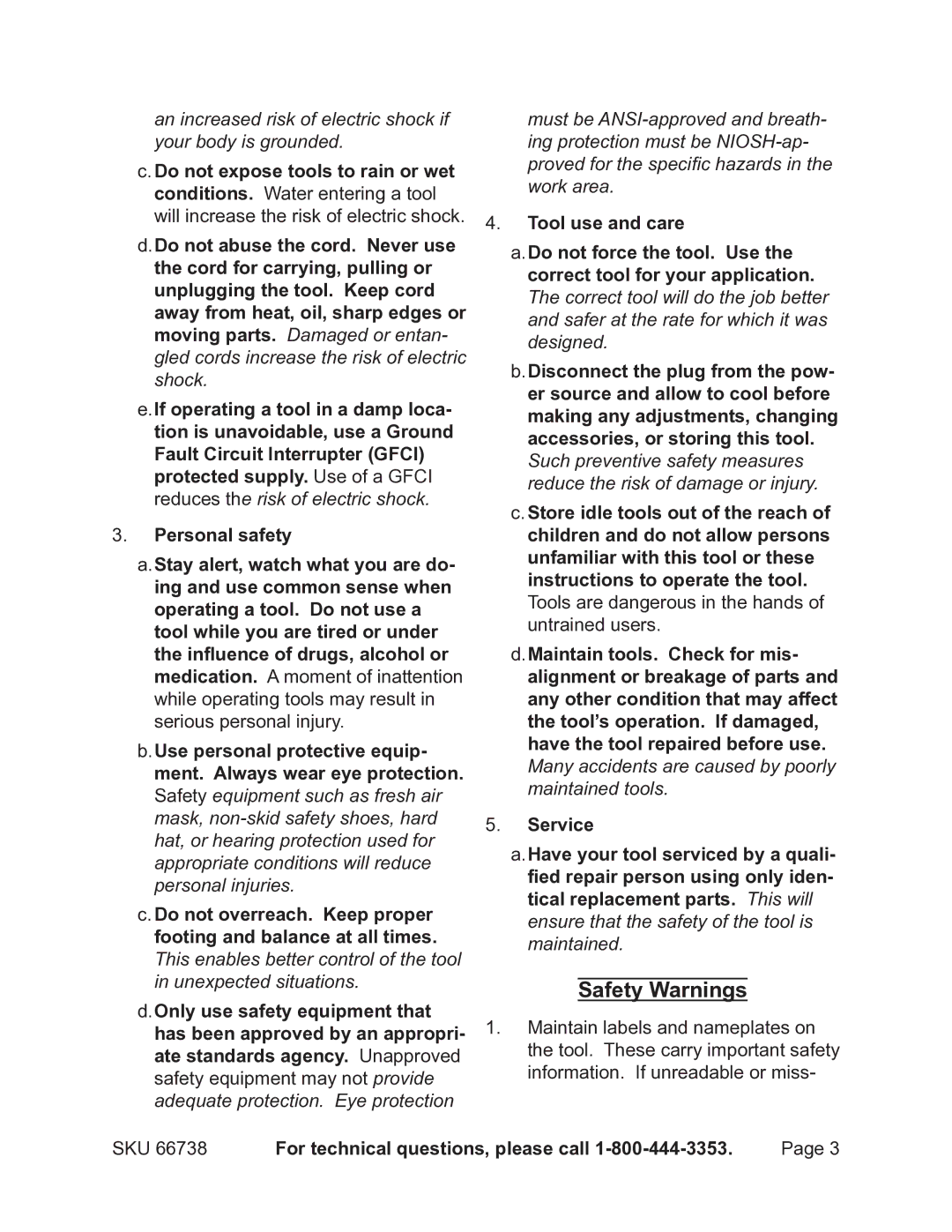an increased risk of electric shock if your body is grounded.
c. Do not expose tools to rain or wet conditions. Water entering a tool will increase the risk of electric shock.
d.Do not abuse the cord. Never use the cord for carrying, pulling or unplugging the tool. Keep cord away from heat, oil, sharp edges or moving parts. Damaged or entan- gled cords increase the risk of electric shock.
e.If operating a tool in a damp loca- tion is unavoidable, use a Ground Fault Circuit Interrupter (GFCI) protected supply. Use of a GFCI reduces the risk of electric shock.
3.Personal safety
a.Stay alert, watch what you are do- ing and use common sense when operating a tool. Do not use a tool while you are tired or under the influence of drugs, alcohol or medication. A moment of inattention while operating tools may result in serious personal injury.
b.Use personal protective equip- ment. Always wear eye protection. Safety equipment such as fresh air mask,
c.Do not overreach. Keep proper footing and balance at all times. This enables better control of the tool in unexpected situations.
d.Only use safety equipment that has been approved by an appropri- ate standards agency. Unapproved safety equipment may not provide adequate protection. Eye protection
must be
4.Tool use and care
a.Do not force the tool. Use the correct tool for your application.
The correct tool will do the job better and safer at the rate for which it was designed.
b.Disconnect the plug from the pow- er source and allow to cool before making any adjustments, changing accessories, or storing this tool.
Such preventive safety measures reduce the risk of damage or injury.
c. Store idle tools out of the reach of children and do not allow persons unfamiliar with this tool or these instructions to operate the tool.
Tools are dangerous in the hands of untrained users.
d.Maintain tools. Check for mis- alignment or breakage of parts and any other condition that may affect the tool’s operation. If damaged, have the tool repaired before use.
Many accidents are caused by poorly maintained tools.
5.Service
a.Have your tool serviced by a quali- fied repair person using only iden- tical replacement parts. This will ensure that the safety of the tool is maintained.
Safety Warnings
1.Maintain labels and nameplates on the tool. These carry important safety information. If unreadable or miss-
SKU 66738 | For technical questions, please call | Page 3 |
